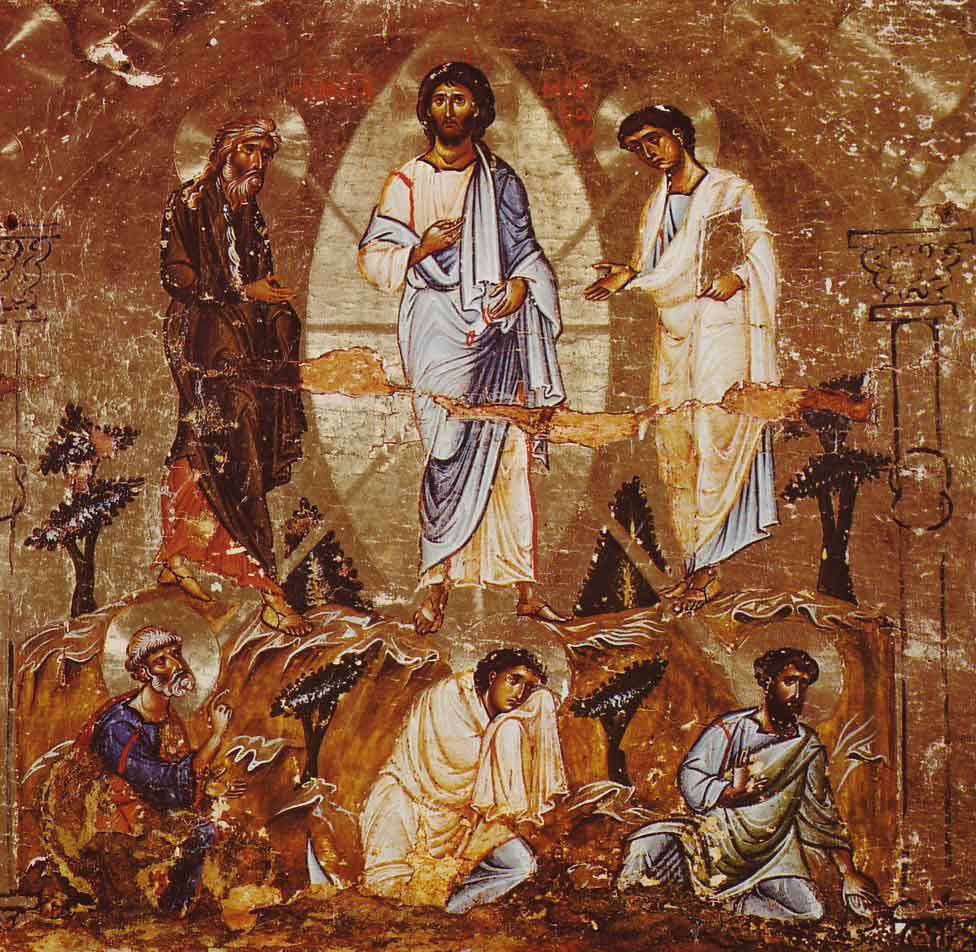Your cart is currently empty!

Holy Guests: Sukkot and the Transfiguration
The festival of Sukkot is known as the z’man simchateinu, “the time of our rejoicing.” It is the most joyous of all the holidays and is a time of celebration for the harvest, the passing of judgment on the high holidays, and the completion of the liturgical cycle.
One of the most important aspects of Sukkot is inviting guests into one’s sukkah (booth). All throughout the week celebrants travel from sukkah to sukkah, enjoying hospitality and extending hospitality from their sukkot (booths). The festival of Sukkot is basically a weeklong party.
Ushpizin
A peculiar custom that developed was not just inviting physical guests to one’s sukkah, but spiritual guests as well. This custom is known as ushpizin (אושפיזין), which literally means “guests.” During the seven days of Sukkot, special declarations are recited which welcome a different Bible character each night. Based on Micah 5:5, these guests are known as the “seven shepherds”: Abraham, Isaac, Jacob, Moses, Aaron, Joseph, and David. [1] The tradition is that each of the seven guests has a special lesson to teach based upon their lives as recorded in the Scriptures.
It is difficult to know exactly how ancient this custom is but it probably was developed sometime in the Middle Ages. The earliest reference to the custom is found in the Zohar:
“Observe that when a man sits in this abode of the shadow of faith, the Shechinah spreads her wings over him from above and Abraham and five other righteous ones make their abode with him.” R. Abba said: “Abraham and five righteous ones and David with them. Hence it is written, ‘In booths you shall dwell seven days’, as much as to say, ‘You seven days shall dwell in booths’, and a man should rejoice each day of the festival with these guests who abide with him.” (Zohar III, 103b-104a)
We also find a list of “seven shepherds” in the Midrash Rabbah, although it is slightly different than what we find in the custom today. They are listed as: David, Adam, Seth, Methuselah, Abraham, Jacob, and Moses. [2] While this does show that the tradition of the seven shepherds could date back earlier than the Middle Ages, it is still difficult to accurately date the inception of the ushpizin tradition.
The Transfiguration
![]()
The Transfiguration of Christ: Part of an iconostasis in Constantinople style. Middle of the 12th century (Image: Wikimedia Commons)
Turning to the New Testament, we find some curious parallels. For example, the book of Revelation speaks of “seven torches of fire, which are the seven spirits of God,” [3]which in turn correspond to the seven churches:
As for the mystery of the seven stars that you saw in my right hand, and the seven golden lampstands, the seven stars are the angels of the seven churches, and the seven lampstands are the seven churches. (Revelation 1:20)
Is it possible that there is some kind of connection between these groups of seven and the “seven shepherds” that also inspired the ushpizin tradition? I am not suggesting that John was aware of the Sukkot ushpizin tradition; I am suggesting that both John and the ushpizin tradition drew from a common source.
In the Jewish-Christian work Clementine Homilies, the seven shepherds are called the “seven pillars” based on Proverbs 9:1. In the Homilies they are listed as Adam, Noah, Enoch, Abraham, Isaac, Jacob, and Moses. [4]
Another New Testament parallel to the ushpizin tradition might be derived from the transfiguration story:
Now about eight days after these sayings he took with him Peter and John and James and went up on the mountain to pray … And behold, two men were talking with him, Moses and Elijah …Now Peter and those who were with him were heavy with sleep, but when they became fully awake they saw his glory and the two men who stood with him. And as the men were parting from him, Peter said to Jesus, “Master, it is good that we are here. Let us make three tents, one for you and one for Moses and one for Elijah”—not knowing what he said. (Luke 9:28‒33)
Although there is no indication that this event took place during the festival of Sukkot, Peter offers to build tents, literally booths (sukkot, סוכות), for two spiritual guests: Moses and Elijah. Of course, Elijah is not on the list of the “seven shepherds” of the ushpizin tradition today, but, as we have seen, the list of “seven shepherds” varied a lot more in the early stages of the tradition. Thus just like in the ushpizin tradition, the story of the transfiguration involves sukkot and holy guests. It is possible that today’s usphizin tradition was inspired by the same ideas that originally gave significance to the story of the transfiguration.
Conclusion
The ushpizin tradition did not fully emerge until sometime in the Middle Ages. The writers of the New Testament most certainly did not practice the ushpizin custom nor were they aware of it. At the same time, it is possible that the writers of the New Testament and the creators of the ushpizin tradition both drew upon a similar interpretation and strain of tradition. If so, one plausible source-tradition might be the interpretations around “the seven shepherds” of Micah 5:5 and the “seven pillars” of Proverbs 9:1.
Endnotes
- For more details about the “seven shepherds” see Toby Janicki, D. Thomas Lancaster, and Brian Reed, Love and the Messianic Age: Study Guide and Commentary (Marshfield, MO: First Fruits of Zion, 2012), 89.
- Song of Songs Rabbah 8:13.
- Revelation 4:5.
- Clementine Homilies 18:13-14. For a detailed study of these Clementine passages see Charles A. Gieschen, “The Seven Pillars of the World: Ideal Figure Lists in the Christology of the Pseudo-Clementines,” Journal for the Study of the Pseudepigrapha 12 (1994): 47-82.
Source: First Fruits of Zion